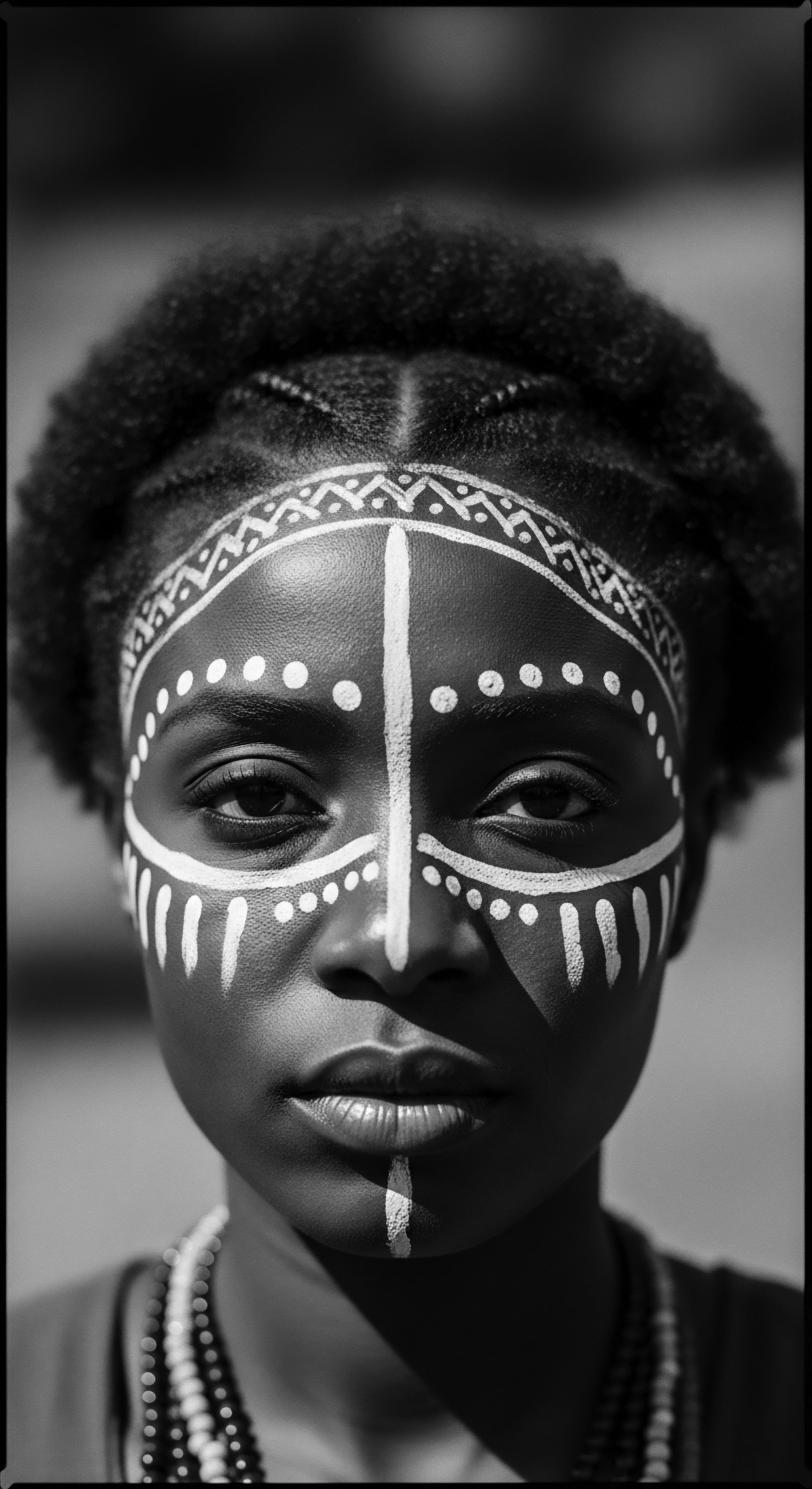
Roots
Consider for a moment the silent language of our hair, particularly textured hair. It holds within its very structure not merely biology, but the whisperings of ancient pathways, the echoes of hands that tended it through epochs. For individuals with textured hair, care practices reach beyond superficial trends; they represent an unbroken lineage, a deep conversation with ancestral wisdom. Can ancient oil practices truly elevate modern textured hair care?
To address this, we must first journey into the foundational understanding of our hair, tracing its history from the elemental source to its varied expressions. This journey reveals that the answers we seek today often lie within the inherited knowledge of those who came before us, guardians of a heritage expressed in every strand.
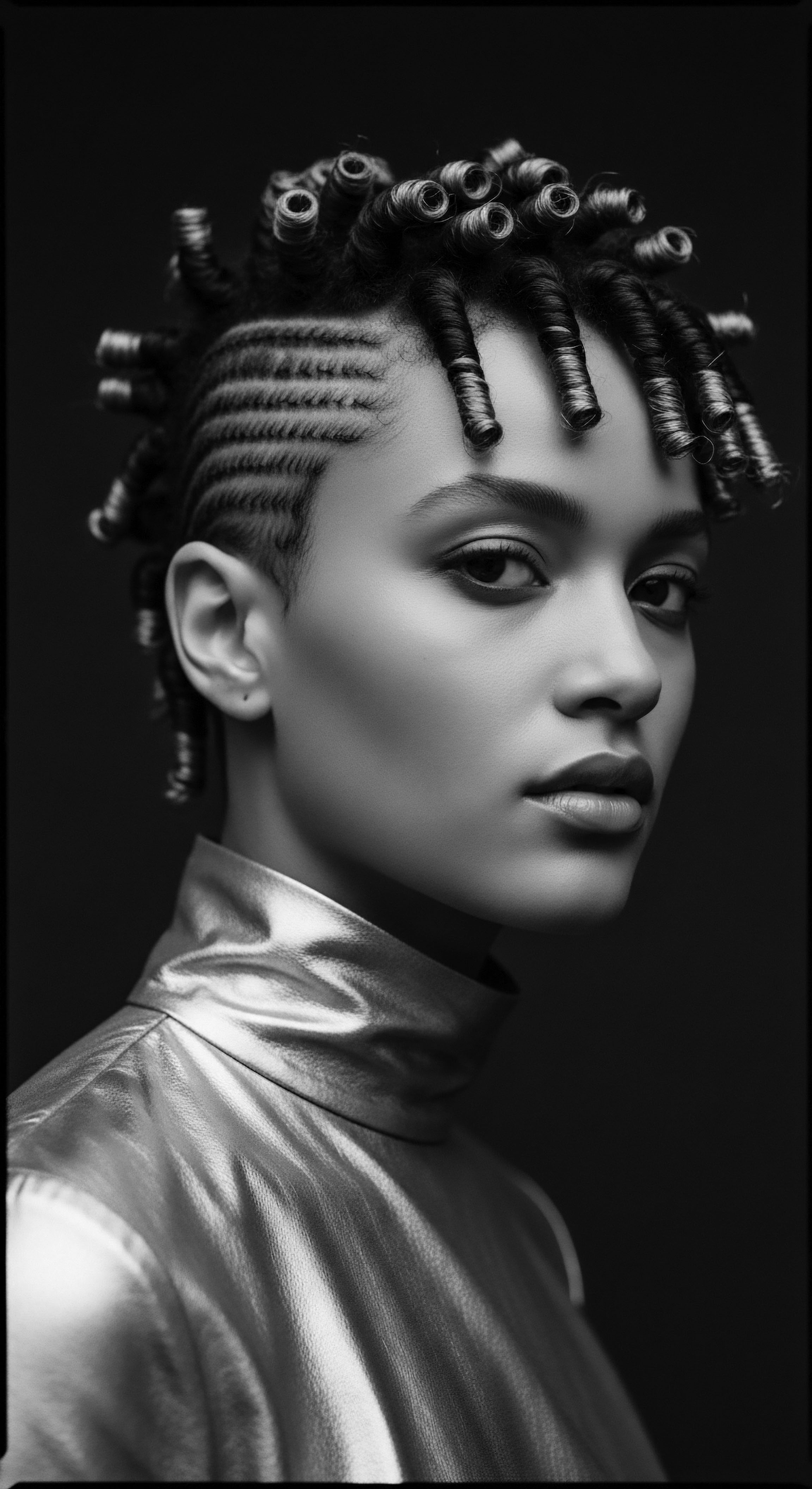
Anatomy of Textured Hair From the Ancestral View
The very architecture of textured hair, with its unique bends, coils, and spirals, shapes its needs. Unlike straighter hair types, the natural curvature of textured strands means sebum, the scalp’s own conditioning oil, struggles to travel down the hair shaft. This inherent characteristic contributes to a natural propensity for dryness, a reality understood by our ancestors long before scientific terms like “sebum distribution” entered our lexicon. In pre-colonial African societies, the observation of this dryness, alongside the desire for strong, flexible hair, directly influenced early care rituals.
They understood that external nourishment was not simply an adornment, but a fundamental act of preservation. The hair follicle itself, a hidden root, dictates the curl pattern through its elliptical shape, a biological blueprint that has remained constant through time (Mensah, 2017). This unique shape also affects how external agents interact with the hair.
Textured hair’s distinct curvature means it naturally requires more external moisture, a truth honored in historical care practices.
Early communities did not possess microscopes to examine the cuticle layer or the cortex, yet their practices implicitly recognized these structures. They knew, through observation and inherited wisdom, that certain plant extracts, animal fats, and oils could create a protective sheath, guard against environmental stressors like sun and wind, and impart a healthy sheen. This intuitive understanding of what modern science calls “sealing the cuticle” was a cornerstone of ancient methods. The resilience of hair, particularly its ability to withstand styling and environmental exposure, was a testament to the efficacy of these traditional oiling regimens.
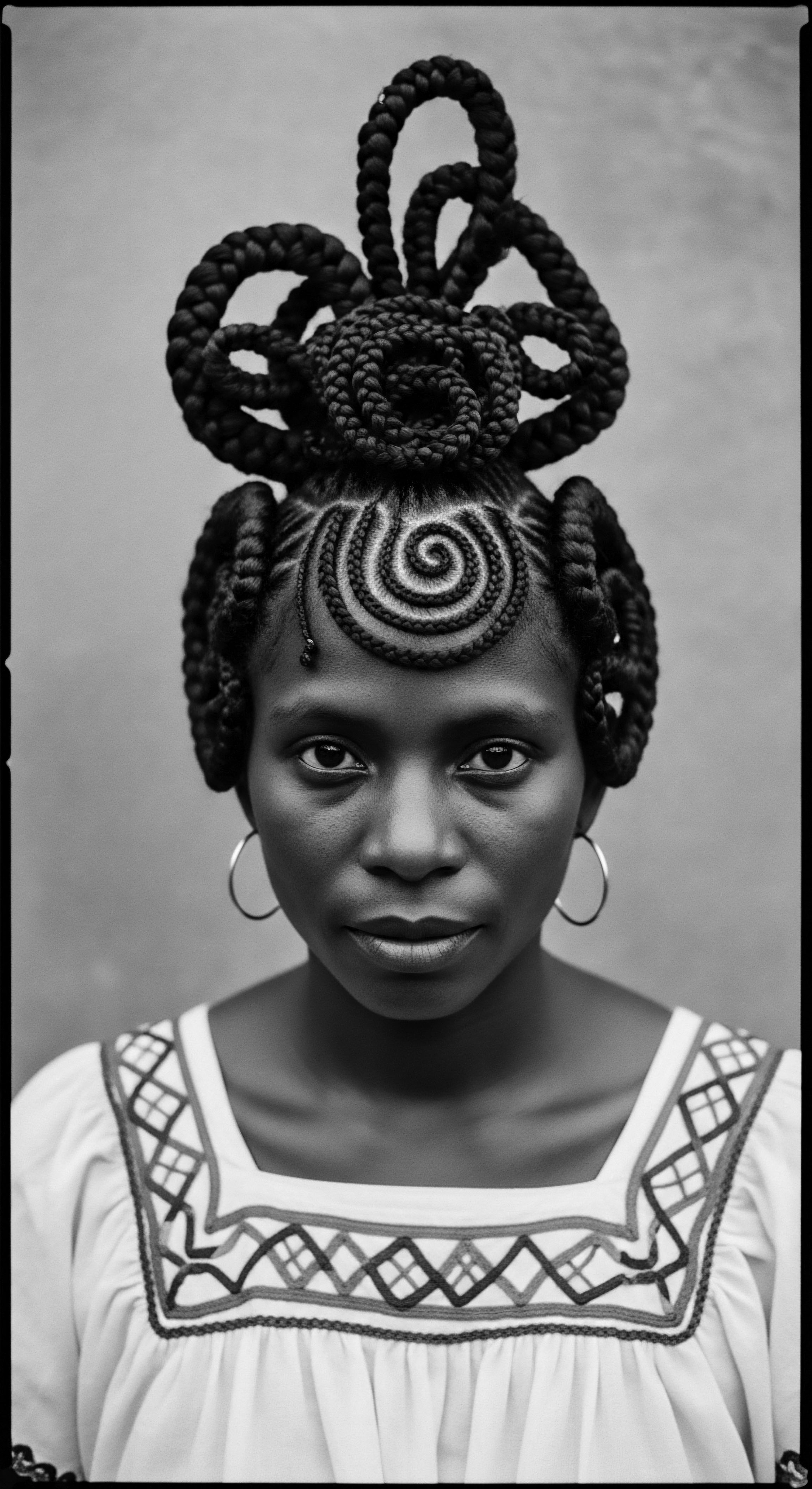
Classifying Textured Hair
The systems we use today to categorize textured hair, often with numbers and letters, attempt to describe the spectrum of curl patterns. Yet, these contemporary classifications sometimes overlook the deeper cultural and historical nuances of hair diversity. Historically, hair was not categorized by numerical types but by its role as a marker of identity, status, and communal belonging.
Hairstyles, and the health of the hair allowing for their creation, communicated wealth, marital status, age, and tribal affiliation. For instance, in many West African societies, intricate braided styles spoke volumes about a person’s place in the community, often requiring hours or days of communal grooming (Byrd & Tharps, 2014).
The health and appearance of one’s hair reflected social standing and even spiritual power. If hair appeared well-tended, it could signify vitality or even the ability to produce bountiful harvests (Dermatology, 2023). This ancient perception of hair as a living, communicating entity meant that its care was imbued with profound significance. Oils were not mere cosmetic applications; they were agents of these deeper cultural narratives, contributing to hair that could be shaped, adorned, and interpreted.

The Essential Lexicon of Care
Language shapes our understanding, and the words used to describe textured hair and its care have evolved. While modern terms like “low porosity” or “co-wash” define aspects of care, ancestral lexicons described a living connection to the earth and community.
Consider the term Chebe, originating from the Basara women of Chad. This word refers to a traditional herbal mixture, often combined with oils and animal fats, celebrated for its ability to promote extreme length retention and reduce breakage. Its use illustrates a deeply rooted understanding of hair strength derived from natural resources available within specific environments.
The practice is not simply about applying a product; it encompasses a ritual of care passed down through generations, focused on sealing moisture and protecting the hair shaft from physical manipulation and environmental factors. This regional term, representing centuries of accumulated wisdom, highlights how traditional naming conventions often carried within them the entire philosophy of a care system.
How can these historical naming conventions enrich our contemporary discourse surrounding textured hair? By recognizing and learning from such terms, we bridge the gap between scientific understanding and ancestral knowledge, fostering a more respectful and holistic approach.

Hair Growth Cycles and Influencing Factors
The natural rhythm of hair growth, its cycles of activity, rest, and shedding, is universal. Yet, environmental and nutritional factors historically impacted hair health in ways modern societies often overlook. Ancestral diets, rich in locally sourced, unprocessed foods, likely contributed to robust hair growth.
Similarly, climates varied, leading to distinct adaptive care practices. In arid regions, heavier oils and butters shielded hair from dryness, while in more humid areas, lighter applications might have prevailed.
The knowledge of these cycles, while not formalized in scientific literature, was implicit in ritualistic care. Regular scalp massages with oils, a practice seen in ancient India’s Ayurvedic traditions and various African communities, were believed to stimulate blood circulation, thereby supporting healthy hair growth and providing nutrients to the follicles. This demonstrates an intuitive grasp of capillary blood flow and its importance to the scalp’s vitality, a concept now validated by contemporary dermatological understanding.
The question is not whether modern science surpasses ancient wisdom, but how the two can coalesce. The past offers a framework, a heritage of empirical observation refined over millennia. The science offers validation and refinement.

Ritual
Hair care, especially for textured hair, has always been more than a functional necessity; it is a ritual, a communal gathering, and an artistic expression. The question before us then becomes ❉ How has ancient oiling influenced or been part of these profound styling heritage practices? The answer lies in the deep resonance between the properties of natural oils and the intrinsic needs of coiled and curly strands, a relationship shaped by millennia of hands-on experience and collective knowledge. These rituals, passed down through families and communities, hold the secrets to hair that defies external pressures and expresses inner vitality.
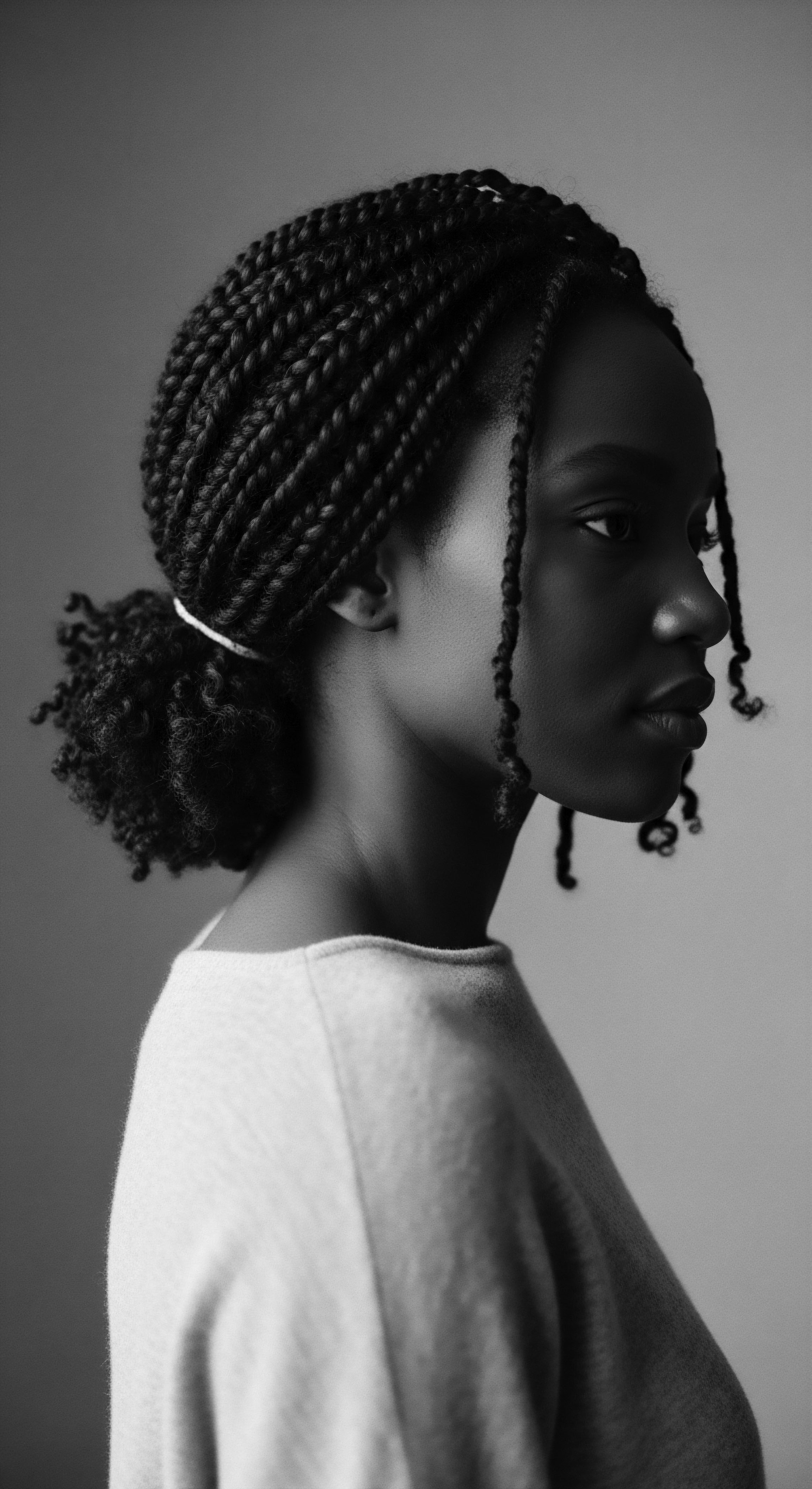
Protective Styling Encyclopedia and Its Ancestral Roots
Protective styles—such as braids, twists, and locs—are a cornerstone of textured hair care today, safeguarding delicate strands from daily manipulation and environmental elements. Their origins trace back thousands of years to African civilizations, where these styles served not only a functional purpose but also held deep cultural, social, and spiritual significance. Oiling played an indispensable role in the creation and maintenance of these historical styles.
Before braiding, oils and buttery balms were applied to hair for moisture and ease of detangling, making the process smoother and ensuring the finished style lasted longer. This foundational step prevented breakage and kept hair supple within its protective casing.
- Cornrows ❉ Dating back to 3000 B.C. in the Horn and West coasts of Africa, these intricate patterns were often used for communication, sometimes concealing messages or even rice seeds during the transatlantic slave trade as a means of survival and cultural continuity (Dabiri, 2020; BLAM UK CIC, 2022). Oils provided the slip needed for precise parting and clean, tight rows.
- Bantu Knots ❉ These coiled sections of hair, originating from the Zulu people of Southern Africa, were not just a style but a method for preserving moisture and setting curl patterns, often prepared with enriching oils.
- Locs ❉ Seen across various African tribes, such as the Himba of Namibia, where a mixture of ground ochre, goat hair, and butter was used to form and maintain them, symbolizing age, marital status, and life stage. Oils provided the binding and conditioning elements.
The ingenuity of these ancestral styling practices, deeply entwined with the application of natural oils, reveals a comprehensive system of hair preservation and adornment.

Natural Styling and Definition Techniques
The pursuit of natural curl definition is a contemporary goal, yet the principles underlying it have historical precedence. Ancient practices employed oils to enhance the natural curl, rather than alter it, allowing the hair’s inherent beauty to emerge. Consider the use of oils to ‘set’ a curl or wave. After cleansing, application of certain oils could provide weight and moisture, encouraging coils to clump and define.
In some African traditions, after washing hair, natural oils like shea butter or coconut oil were massaged into the strands, followed by twisting or braiding while damp. Upon unraveling, the hair would exhibit more defined patterns, a testament to the oil’s conditioning and structuring properties. This mirrors modern techniques of twist-outs and braid-outs, where oils are routinely used to seal in hydration and impart a glossy finish to the resulting natural patterns.
The historical use of oils in defining natural curl patterns offers profound lessons for today’s textured hair community.

Wigs and Hair Extensions ❉ Cultural Uses
The history of wigs and hair extensions also has roots stretching back to antiquity, particularly in ancient Egypt, where they served purposes beyond mere aesthetics. Egyptians used wigs for protection from the sun, hygiene, and as symbols of status and social rank. These elaborate hairpieces, often made from human hair, plant fibers, or wool, were meticulously styled and conditioned.
Oils like castor and almond were regularly applied to both natural hair and the fibers used in wigs to keep them supple, prevent breakage, and maintain a lustrous appearance. This ancient practice of caring for supplemental hair with oils highlights a continuous tradition of enhancing and maintaining one’s coiffure, whether biological or constructed, through rich emollients. The pursuit of a desired look, reflective of one’s identity or societal role, always involved the thoughtful application of these natural conditioners.

Heat Styling and Historical Methods
While modern heat styling tools present their own challenges to textured hair, historical accounts reveal earlier forms of thermal manipulation. In the era of post-slavery America, enslaved women sometimes resorted to rudimentary heat methods, such as using a butter knife heated over a fire, along with substances like butter or bacon fat, to straighten their hair (Dermatology, 2023). This often resulted in damage. This stark example illustrates a painful adaptation under duress, where ancestral protective practices were forcibly replaced by desperate measures to conform to imposed beauty standards.
The contrast here is striking ❉ ancient oiling traditions aimed to preserve hair health, often within the context of protective styles, whereas the coerced use of heat and improvised oils during slavery highlighted a struggle for dignity and acceptance within a system designed to degrade. Understanding this historical context provides a sobering reminder of why the modern pursuit of hair health for textured strands must center on genuine care and respect for its inherent structure. Today, when heat is applied, oils continue to serve as a protective barrier, though the science behind formulations has advanced to offer greater thermal defense.

The Complete Textured Hair Toolkit
The tools of hair care have changed over millennia, yet the core functions remain. Ancient communities crafted combs from wood, bone, or even found materials, used for detangling and distributing products (Salford Students’ Union, 2024). The hands themselves were the primary tools for applying oils, massaging the scalp, and sculpting styles.
| Tool Category Combs |
| Ancient Adaptation (Heritage Link) Carved wooden or bone combs for detangling and precise parting, often used in conjunction with applied oils to smooth strands. |
| Modern Parallel (Oil Integration) Wide-tooth combs and flexible detangling brushes designed to glide through textured hair, often used to distribute moisturizing oils and conditioners. |
| Tool Category Applicators |
| Ancient Adaptation (Heritage Link) Hands were primary. Natural leaves or fibrous materials might have aided in applying thick oils or herbal pastes. |
| Modern Parallel (Oil Integration) Fingertips for scalp massage and strand application; applicators and spray bottles for even distribution of lighter oils. |
| Tool Category Headwraps/Coverings |
| Ancient Adaptation (Heritage Link) Worn for protection from elements, hygiene, and as symbols of identity and status. Often used to cover oiled hair during styling processes or for preservation. |
| Modern Parallel (Oil Integration) Silk or satin scarves and bonnets, serving to protect styled hair, retain moisture from oils, and reduce friction during sleep. |
| Tool Category The evolution of hair care tools reflects a continuous effort to nourish and protect textured hair, with oils consistently serving as a vital component across generations. |
The communal aspect of hair grooming meant tools were shared, and techniques were observed and replicated. The application of oils was often a tactile, intimate process, strengthening bonds between individuals as much as it strengthened hair. This rich heritage of collective care, facilitated by simple tools and potent natural ingredients, offers a powerful lesson in fostering healthy hair communities today.
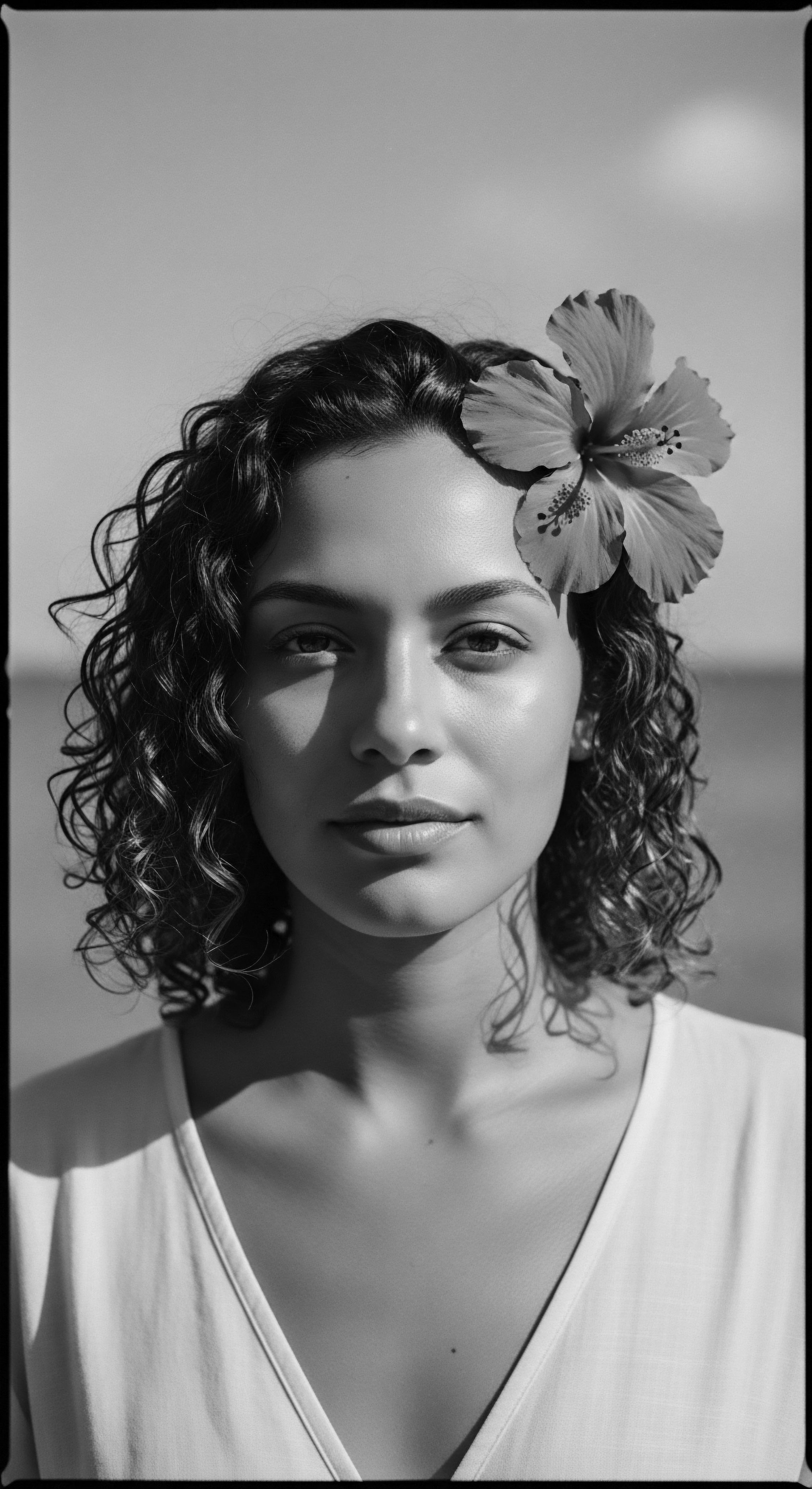
Relay
To consider whether ancient oil practices improve modern textured hair care, we must move beyond simple application and embrace a deeper, more contextual understanding of holistic care. This involves not only the physical act of oiling but also its cultural implications, its scientific underpinnings, and its role in a broader wellness philosophy rooted in ancestral wisdom. The conversation is about how these enduring traditions can inform and elevate our contemporary approaches, creating a seamless relay of knowledge from past to present.

Building Personalized Textured Hair Regimens
The concept of a personalized hair regimen, tailored to individual needs, is not a modern invention. Ancient communities understood that local climate, available resources, and individual hair characteristics dictated appropriate care. While they did not use terms like “hair porosity,” their practices reflected an intuitive grasp of how hair absorbed and retained moisture. For instance, heavier butters and oils were favored in dry climates, while lighter oil infusions might suit different needs.
The Ayurvedic tradition, for example, emphasizes tailoring oil choices to one’s unique constitution, or “dosha,” a holistic approach to wellbeing that extends to hair health (Ayurda, 2024). This ancient system demonstrates a sophisticated understanding of personalized care, selecting specific herbs and oils for their properties, whether for growth stimulation, scalp health, or strand strengthening.
What foundational principles from ancestral wisdom can guide a modern regimen?
- Consistency ❉ Many ancient oiling practices were regular, often daily or weekly rituals, emphasizing continuous nourishment rather than sporadic treatments. This consistent application helps maintain moisture levels and protects the hair over time.
- Observation ❉ Ancestors learned by observing how their hair responded to different natural elements. This encourages a modern user to become a student of their own hair, noting how it reacts to particular oils and methods.
- Ingredient Purity ❉ Ancient oils were typically unrefined and close to their natural state, free from synthetic additives. This prioritizes simple, potent ingredients, reducing exposure to harsh chemicals.
By drawing on these heritage principles, we build regimens that are not only effective but also deeply connected to a legacy of mindful care.

The Nighttime Sanctuary ❉ Bonnet Wisdom
The bonnet, or head covering, holds profound significance in textured hair care, serving as a nightly sanctuary for strands. Its function of preserving moisture and protecting hair from friction finds echoes in historical practices of head wrapping. In many African cultures, headwraps were, and still are, symbols of identity, status, and protection. Beyond their social meanings, they also played a practical role in preserving hairstyles and keeping hair clean.
During the era of transatlantic slavery, head coverings, often simple scarves or kerchiefs, became a means of safeguarding hair that was otherwise neglected due to harsh conditions and lack of proper tools and products (Dermatology, 2023). These coverings, while sometimes enforced, were also adapted by enslaved women as acts of defiance and self-preservation, protecting their hair and retaining moisture from any improvised emollients like animal fats or butters they could access. The modern satin bonnet, designed to reduce friction and maintain hydration from applied oils and conditioners, thus carries the weight of this heritage—a simple tool with a deep history of protective care and cultural resilience.

Ingredient Deep Dives for Textured Hair Needs
The true power of ancient oil practices lies in the ingredients themselves, substances whose benefits were discovered through generations of empirical use. Modern science now offers explanations for what ancestors knew by touch and observation.
Can modern understanding explain the effectiveness of traditional oils on textured hair? Yes, with compelling evidence.
Coconut Oil, a staple in Ayurvedic practices for millennia, is one of the few oils capable of penetrating the hair shaft and cortex due to its small molecular size and high lauric acid content (Science-y Hair Blog, 2013). This unique property helps reduce protein loss and strengthens hair from within, directly addressing a common vulnerability of textured hair prone to breakage.
Castor Oil, widely used in ancient Egypt by figures like Cleopatra for its moisturizing and strengthening properties, contains ricinoleic acid, which promotes circulation to the scalp and supports healthy growth (Newsweek, 2022). Its thick consistency also makes it an excellent sealant for locking in moisture.
Shea Butter, a traditional West African staple, offers rich emollients that coat the hair, providing a protective barrier against moisture loss and environmental damage. While it may not penetrate deeply, its sealing capabilities are vital for managing dryness in textured hair.
| Oil Coconut Oil |
| Key Properties Lauric acid, small molecular size |
| Historical Context and Use Ayurvedic tradition (India) for hair oiling, centuries of use for strong, healthy hair. |
| Modern Scientific Link to Textured Hair Penetrates hair shaft, reduces protein loss, strengthens inner cortex. |
| Oil Castor Oil |
| Key Properties Ricinoleic acid, thick viscosity |
| Historical Context and Use Ancient Egypt for growth and strength; used by Cleopatra for lustrous hair. |
| Modern Scientific Link to Textured Hair Promotes scalp circulation, provides deep moisture, acts as a sealant against dryness. |
| Oil Shea Butter |
| Key Properties Rich fatty acids, solid consistency |
| Historical Context and Use West African tradition for moisturizing and protecting hair and skin. |
| Modern Scientific Link to Textured Hair Forms a protective barrier, seals in moisture, minimizes frizz, and improves pliability. |
| Oil Argan Oil |
| Key Properties Antioxidants, Vitamin E |
| Historical Context and Use Moroccan Berber communities for dryness, frizz control, and shine. |
| Modern Scientific Link to Textured Hair Nourishes hair, tames frizz, and imparts shine; aligns with contemporary focus on lightweight conditioning. |
| Oil The legacy of ancient oils continues to inform effective strategies for textured hair, as modern science validates their enduring benefits. |
The synergy between these ancient choices and their confirmed scientific benefits is compelling. It offers a framework for selecting products that align with both heritage and informed care.
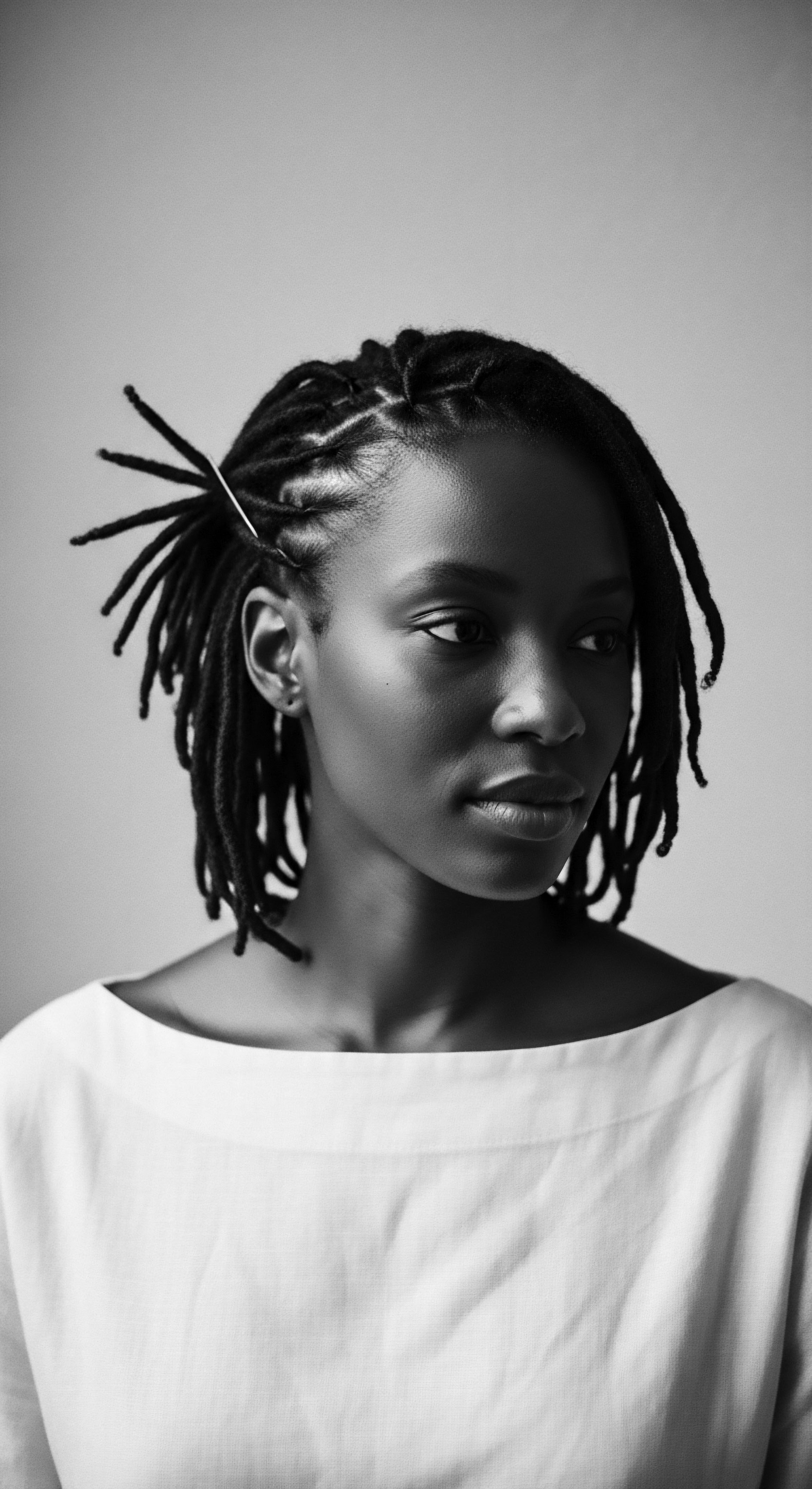
Textured Hair Problem Solving Compendium
Dryness, breakage, and scalp irritation are common concerns for textured hair. Ancient oil practices often addressed these very issues through preventative and restorative applications. For example, regular oil massages were believed to combat dandruff and soothe irritated scalps in Ayurvedic practices. The antimicrobial properties of some oils, like castor oil, would have inherently helped maintain a healthy scalp microbiome (Global Beauty Secrets).
Ancestral oil rituals inherently provided solutions for common textured hair concerns, underscoring their enduring practicality.
The Basara women of Chad provide a powerful, specific historical example of problem solving through ancient oil practices. They use a traditional mixture known as Chebe, a blend of herbs often mixed with oils and animal fats, which is applied to the hair and then braided. This practice has allowed them to achieve remarkable hair length, reportedly past the waist, by significantly reducing breakage and retaining moisture.
This particular method, passed down through generations, directly addresses the issue of length retention, a constant challenge for textured hair, by keeping the strands coated and protected from mechanical damage and dryness. This is a practical, effective solution stemming from deeply rooted ancestral practices that continues to generate interest and discussion in modern hair care circles.
This ancestral ingenuity, using readily available natural elements to overcome hair challenges, offers more than just product recommendations. It presents a philosophy of attentive, consistent care.

Holistic Influences on Hair Health
Beyond physical attributes, hair health was connected to spiritual, social, and emotional wellbeing in ancient societies. Hair was viewed as an extension of the self, a conduit for communication with the divine, and a symbol of power. Therefore, caring for hair with oils was not solely about aesthetics; it was a deeply holistic practice.
The communal aspect of hair grooming, where women gathered to braid and oil each other’s hair, fostered strong social bonds and provided opportunities for sharing stories and wisdom. This shared ritual itself contributed to mental wellbeing, easing stress and strengthening community ties. The act of oiling, often accompanied by massage, was a moment of self-care, promoting relaxation and an overall sense of calm.
Can modern routines recapture the holistic essence of ancient oil rituals? Yes, by re-framing hair care as a mindful practice that nourishes the body, mind, and spirit. When we engage with these ancient oil practices, we are not simply applying a product; we are participating in a living heritage, a continuum of care that spans generations and continents. We are honoring the ingenuity, resilience, and wisdom of our ancestors, whose knowledge, passed down through time, continues to provide profound insights for nurturing textured hair today.
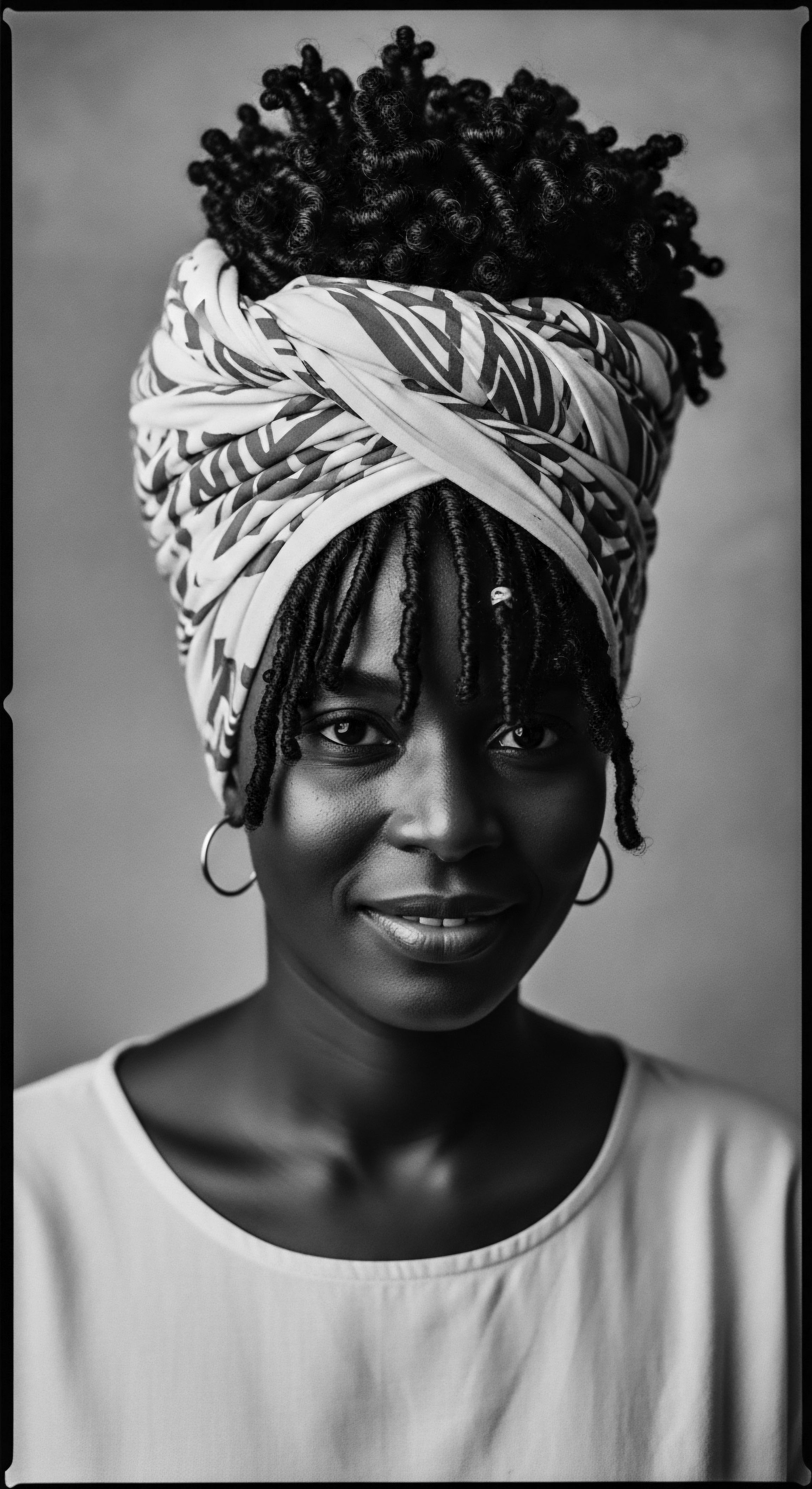
Reflection
The question of whether ancient oil practices can improve modern textured hair care finds its answer not in a simple ‘yes’ or ‘no,’ but in a vibrant reaffirmation of heritage. Each coiled strand carries the memory of landscapes, of hands that tended it through sun-drenched savannas and challenging diasporic journeys. The oils—be it the deeply penetrating coconut, the protective shea, or the scalp-stimulating castor—are not isolated ingredients; they are living legacies, conduits of ancestral knowledge that speak to the heart of what Roothea calls the ‘Soul of a Strand.’
Our exploration reveals a continuous dialogue between elemental biology and inherited wisdom. The natural predisposition of textured hair towards dryness, understood intuitively by our forebears, led to the consistent application of emollients. This was a science born of necessity and observation, a profound engagement with nature’s offerings. When we reach for these ancient oils today, we join a timeless conversation, honoring practices that predate contemporary chemistry and industrial production.
Hair care, viewed through this heritage lens, transforms from a mere routine into a meaningful ritual. It becomes an act of defiance against historical erasure, a celebration of resilience, and a deliberate connection to the strength and beauty of Black and mixed-race identities. The enduring practices of oiling, braiding, and communal grooming highlight that hair care is a shared experience, a tender thread weaving through generations, creating bonds and preserving cultural narratives.
The ingenuity of our ancestors, particularly in devising solutions like the Basara women’s Chebe for length retention, offers not only practical insights but also a profound sense of pride. This wisdom, refined over centuries, presents a compelling alternative and complement to the often-fragmented approaches of modern beauty. As we continue to build a living, breathing archive of textured hair heritage, these ancient oil practices serve as luminous guideposts, showing us how to approach our hair not just as a part of our appearance, but as an integral, sacred aspect of our being—a testament to history, identity, and the boundless future of textured hair.
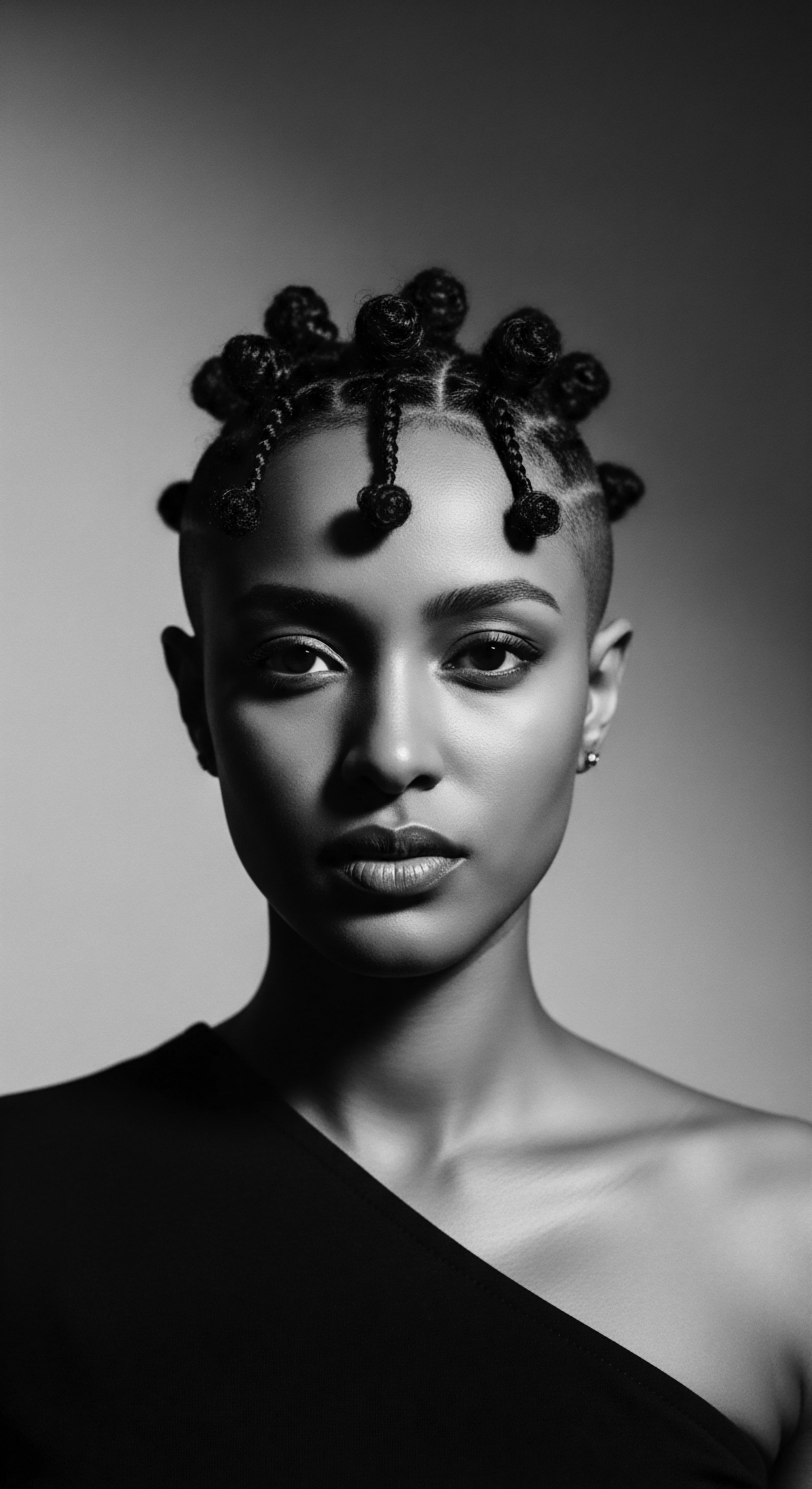
References
- Byrd, A. D. & Tharps, L. L. (2014). Hair Story ❉ Untangling the Roots of Black Hair in America. St Martin’s Griffin.
- Dabiri, E. (2020). Don’t Touch My Hair. Picador.
- Dermatology, W. K. (2023, November 30). What Every Dermatologist Must Know About the History of Black Hair. Cutis.
- Mensah, C. (2017). Good Hair ❉ The Essential Guide to Afro, Textured, and Curly Hair. HQ.
- BLAM UK CIC. (2022, September 15). The history of Black Hair.
- Newsweek. (2022, August 24). Everything You Need To Know About The Ancient Art Of Hair Oiling.
- Global Beauty Secrets. (n.d.). Egyptian Honey and Castor Hair Oil.
- Ayurda. (2024, October 8). Nourish Your Hair ❉ Ancient Practice of Hair Oiling.
- Science-y Hair Blog. (2013, June 24). Oils – Which Ones Soak In vs. Coat the Hair?
- Salford Students’ Union. (2024, October 29). The Remarkable History Behind Black Hairstyles.
